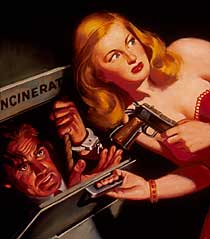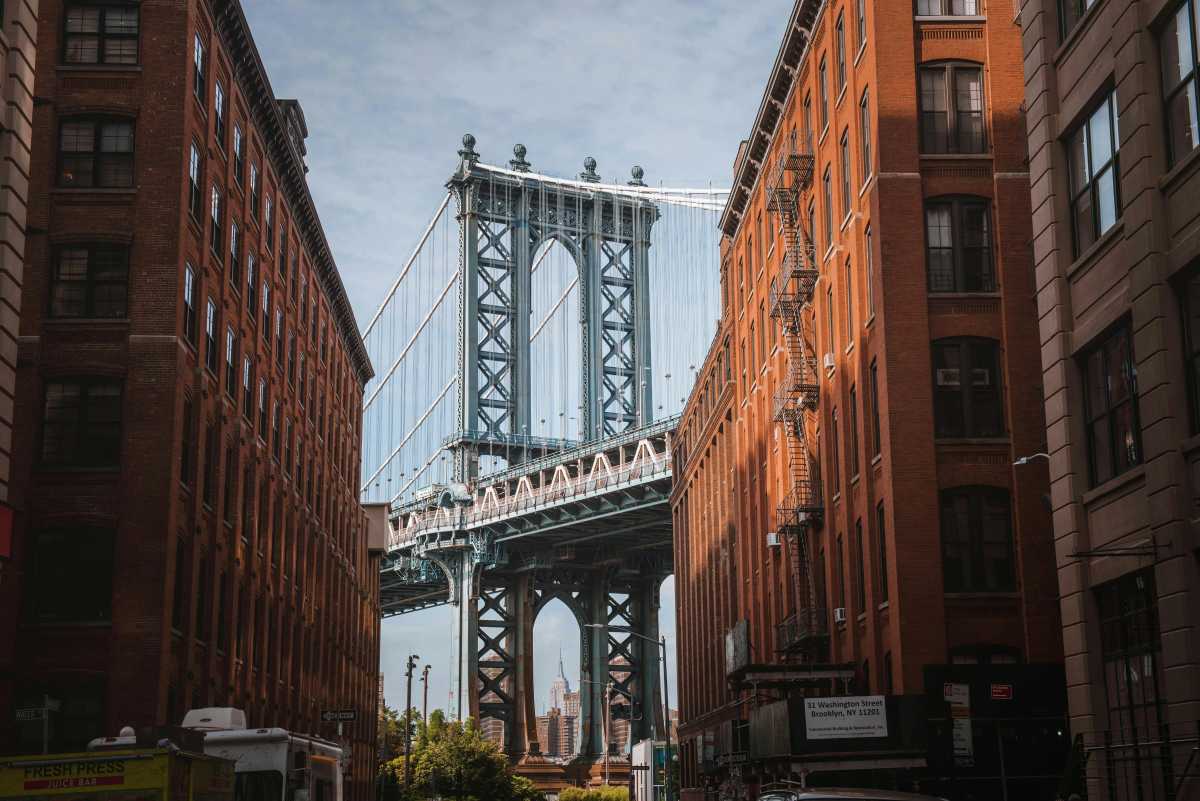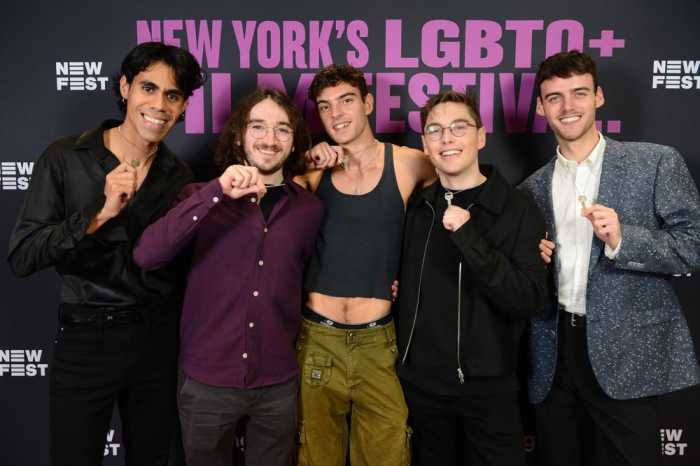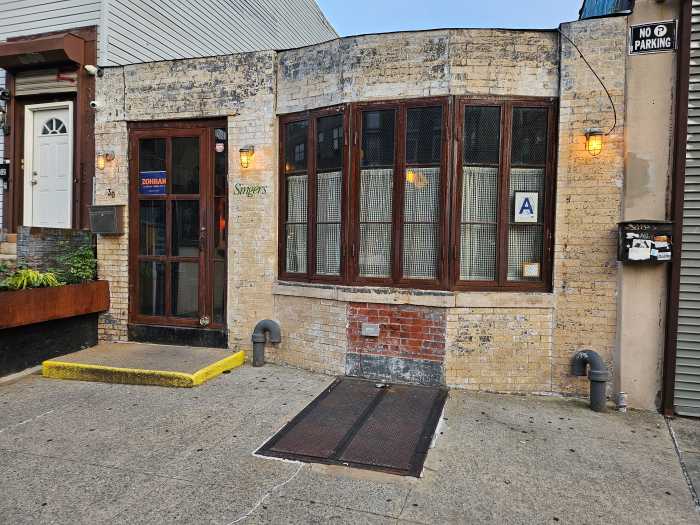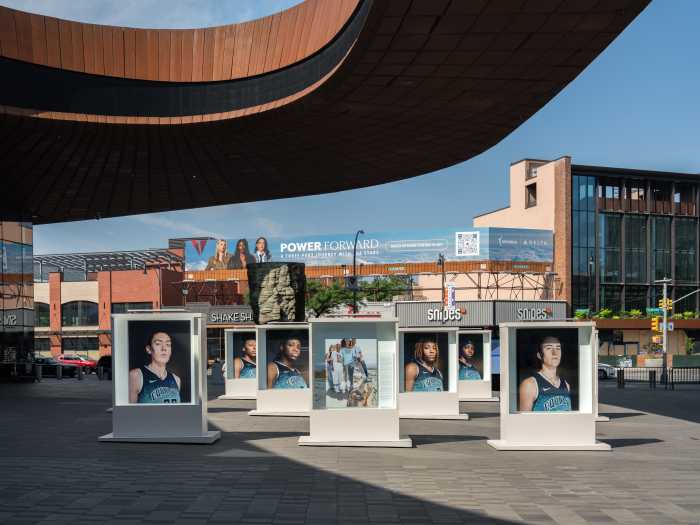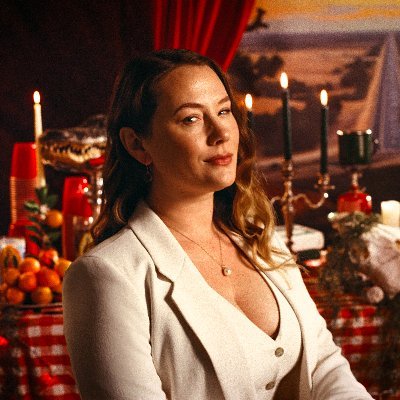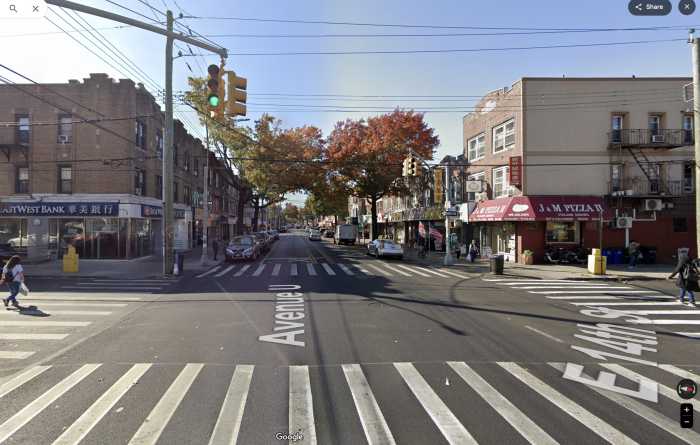Timing is everything and the timing could
not be better for the opening of the Brooklyn Museum of Art’s
latest show, "Pulp Art: Vamps, Villains and Victors from
the Robert Lesser Collection."
Designer Donna Karan’s fall collection is infused with it, cosmetics
counters are touting it and even vaudeville theaters are staging
it. It is New York City’s current infatuation with all things
vintage, from knee-length frocks with sweetheart necklines, to
red pouty lips to burlesque.
"Pulp Art" is a display of more than 100 rare paintings
that were created to illustrate the covers of pulp fiction magazines
in the 1920s, ’30s and ’40s – and they’ve got all of the above
and then some. The exhibit is a riot of color, action, exposed
garters and heaving decolletage.
In short, "Pulp Art" is a very sexy art history lesson.
Just as these violent, voluptuous covers reeled in customers
despite crowded newsstands, the Brooklyn Museum’s "Pulp
Art" is an alluring diversion despite the borough’s crowded
slate of exhibitions and gallery shows.
The murder and mayhem begins as soon as you enter the exhibit.
Kudos for its campy feel – itself an homage to the pulps – goes
to designer Matthew Yokobosky. A nattily dressed man(nequin)
lies face down while a nearby dame – with Veronica Lake blonde
locks – turns her head away in distress. An unfelt gust of air
blows open her coat, conveniently exposing her retro lingerie.
The predecessors of the much tamer covers of the Nancy Drew mysteries
I devoured as a girl, these pulp fiction covers depict damsels
in quite serious distress and varieties of undress. (Nancy would
never!) A portion of the exhibition is devoted to paintings teeming
with aliens and spacecraft from science-fiction pulps while other
areas feature flying aces dueling in the clouds. Still other
walls are filled with illustrations of adventure stories in exotic
locales or Westerns.
With this show, the Museum proves that sex and violence still
sell: "Pulp Art" is a fascinating way to spend an afternoon.
While on the surface many of the cover subjects are patently,
ridiculously offensive – depicting women in bondage, who have
been assaulted or are about to be; portraying Asians as villains;
and glorifying violence, the exhibit is a collection of historical,
cultural artifacts that demonstrate a pervasive, fearful American
mindset in those tumultuous decades that began with Prohibition,
evolved into the Depression, are bookended by world wars and
witnessed both tremendous scientific advancements and shameful
Japanese internment camps. They are a manifestation of the fears
of Americans grappling with new roles for women, immigrants and
science.
H.W. Scott’s "Japs Invade California!" depicting white
women marching into a concentration camp guarded by Asians while
San Francisco burns in the background, was created for a "Click"
magazine cover in February 1941, an eerie premonition of the
Japanese attack on Pearl Harbor and the internment of Japanese-Americans.
Curated by Anne Pasternak, "Pulp Art" fosters an appreciation
for these artists, whose vibrant canvases, brimming with action
and novel perspectives, were often rendered considerably duller
and flatter when reproduced on the cheap "pulp" paper
used to print the magazines. In many cases, the cover is displayed
with the painting, most of which generally have dense, lively
compositions, dramatic perspectives and vibrant, contrasting
colors.
Brooklyn’s own pulp painter, Walter Baumhofer (1904-1987), became
known as "King of the Pulps" after attending Pratt
Institute, according to Robert Lesser’s book "Pulp Art."
There is a variety of Baumhofer’s work, including the powerful
"Strong as Gorillas!" for "Adventure" magazine’s
April 1940 issue. He paints the pilot upside down, diagonally
falling across his sky-blue canvas. The pilot’s mouth is open
in a silent scream, while his jaunty yellow scarf ripples away.
Here, Baumhofer’s unusual perspective literally turns portraiture
on its head. Stunning.
Baumhofer’s "Race Williams! The Bode of the Dead" ("Dime
Detective," January 1937) features a woman who is definitely
in control of the situation. Here, a sweet, bespectacled granny
sews closed the lips of her half-naked male captive while her
two bulky sons help restrain him. The curator points out the
similarities between the victim’s pose and that of Jesus on Mary’s
lap in Michelangelo’s "Pieta" sculpture, but I think
the focal point here is the yarn punched through his lips.
Far more representative of the characterization of women on pulp
covers is H. J. Ward’s "Gunsmoke Gulch" ("Spicy
Western Stories," April 1938). In Ward’s Western tableau,
a blonde in a tattered, red dress writhes against her captor
while her would-be savior remains helplessly bound and gagged
in the foreground. The fear in her wide eyes is barely noticeable
beyond her heaving bosom.
There are paintings by Frank R. Paul, "the father of science-fiction
imagery" including "Golden City on Titan" ("Amazing
Stories," November 1941). This watercolor shows futuristic
buildings yawning high into the sky where Saturn looms large.
Robot-like figures populate this planet, where the skyscrapers
resemble the sets for Cloud City in "Empire Strikes Back."
Some of the pulp covers are outright hilarious, like Rafael De
Soto’s "Murder Nightmare" ("Dime Mystery Magazine,"
September 1942) in which a Frankenstein-like creature, replete
with not-yet-healed sutures, smashes a glass case to grab the
conveniently labeled "human brain." A gun-toting nurse
bursts into the lab in the nick of time.
The original paintings were created in accordance with the publishers’
needs, so most measured 30-inches by 21-inches, with room left
at the top of the painting for the title, author and price to
be stripped in. The dramatic compositions the painters created
while under those restraints achieve their desired impact: the
canvases make the viewer stop in their tracks.
The final rooms of the exhibition include artwork from the next
generation of pulp artists. There are photographs by Helmut Newton
(including a 1983 portrait of actress Catherine Deneuve), Cindy
Sherman and Brooklyn-born artist Gregory Crewdson.
Pulp subjects continue to engender controversy today. Before
HBO’s portrayals of mobbed-up Italian-Americans in "The
Sopranos" galvanized protests, "pulps devoted to gangsters
like ’Gangster Stories’ and ’True Gang Life,’ often glorified
criminals and were therefore regularly condemned by civic groups
and seized from newsstands," according to the exhibition
notes.
So ladies, put on your red lipstick and T-strap shoes – and fellas,
don your shiny spats and fedora – and head on over to the Brooklyn
Museum to see what the newly fashionable fuss over American pulps
is all about.
"Pulp Art: Vamps, Villains and
Victors from the Robert Lesser Collection" will be on view
at the Brooklyn Museum of Art, 200 Eastern Parkway at Washington
Avenue in Prospect Heights through Aug. 31. The museum will be
closed Aug. 4-19.
As part of the Museum’s First Saturday program on June 7, guest
curator Anne Pasternak will discuss "Pulp Art" at 7
pm. At 8 pm, Christina Ferwerder will discuss women in "Pulp
Art." Beginning at 5 pm, admission to the Museum’s First
Saturday events is free.
Wednesdays through Sundays, museum admission is $6, $3 students
with I.D. and seniors. For more information, call (718) 638-5000
or log on to www.brooklynmuseum.org.


